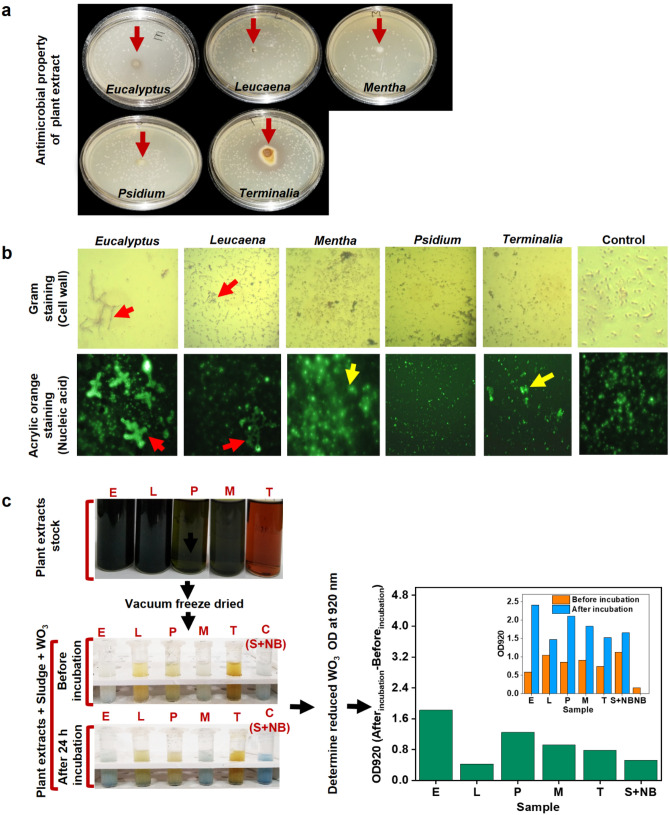Figure 2.
Determination of electrochromic activity and antimicrobial properties. (a) Antimicrobial test with all PWE-PSM-dose (1 mg of PWE per 1 ml of mixed anaerobic sludge having VSS of 25 g.l-1 which is ~ 106 CFU per ml), the red arrows represent the location of wells on which the PWE-PSM-dose was loaded. (b) 1. Gram staining for bacterial cell wall, and 2. Acrylic orange staining for bacterial nucleic acid (after 24 h of incubation with various PWE-PSMs in anaerobic condition) i.e., Eucalyptus globulus (E), Leucaena leucocephala (L), Psidium guajava (P), Mentha piperita (M), Terminalia chebula (T) and without PSM treatment as control (C). In the case of E-dose and L-dose, chain formation, filamentous growth (red arrow) and spheroplast formation (yellow arrow) were visualized. In case of other PWE-PSM-dose, reduction in cell size and cluster formation was observed. (c) The WO3 based electrochromic activity test was carried out at 920 nm (OD920)22, with all PWE-PSM-dose treated mixed anaerobic sludge and detonated with respective plant species names, sludge (S) + nutrient broth (NB). Graphs are plotted by using Origin 9.0 software (https://www.originlab.com/).

